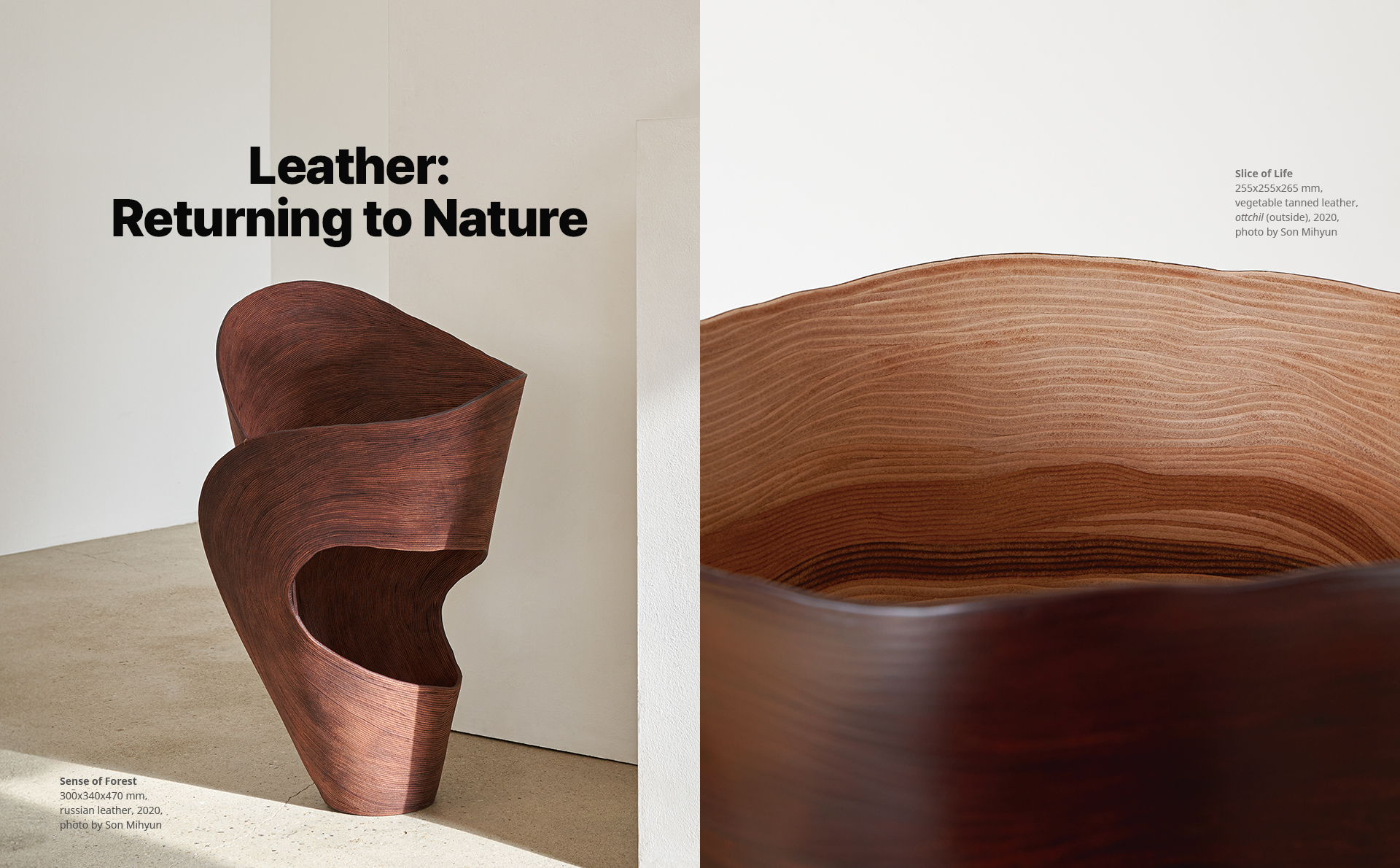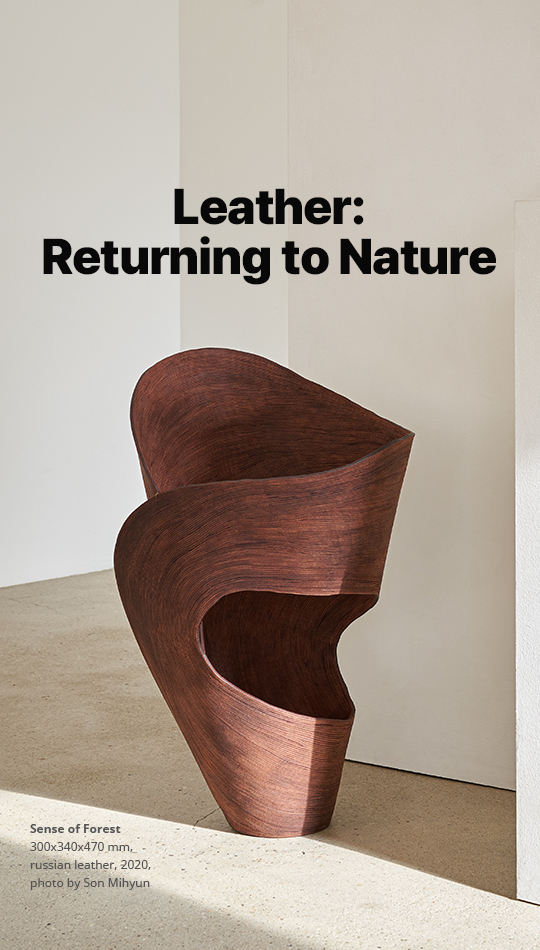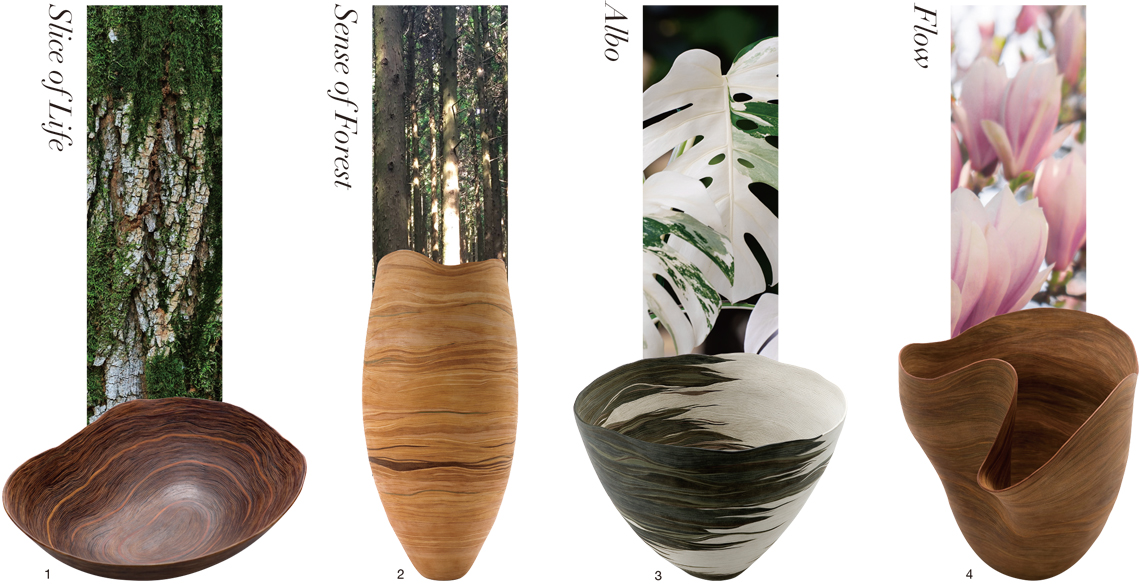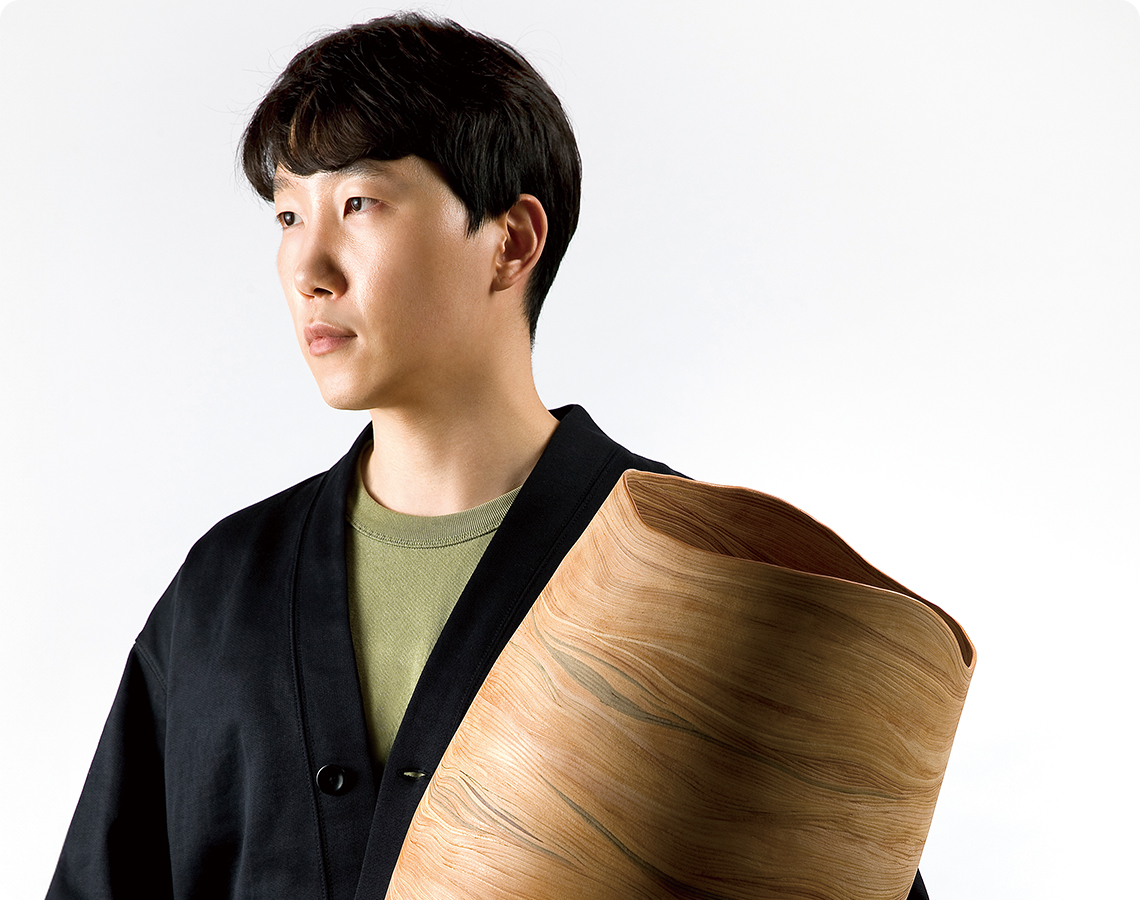In the hands of Kim Junsu, ordinary leather comes to life. His hands twist leather strips and stack them into flowing patterns like the sea waves. Stacked high enough, those strips resemble tree rings. Kim’s artwork reminds us of the natural world, which is derived from nature and is returning there once more.


Writer.
Sung Ji Yeon
Photos courtesy of.
Kim Junsu
Kim Junsu
Q. How did you get into leatherwork?
I got into leatherwork while majoring in metalwork in college. I initially learned leatherwork for fun because its natural, variable properties intrigued me―it was different from the uniformity of metal. I started incorporating leather into my metal projects to explore new materials and techniques. After graduate school, a university program took me to the Tuscan Leather District, where I joined a leatherwork workshop. That experience deepened my interest and led me to focus more on leather.
Q. Can you share some of your artwork series?
My first series, “Slice of Life,” stemmed from my early experiences with handicrafts, where I believed the charm of craftsmanship lay in creating functional objects. I made leather crocks, focusing on practicality and ensuring they were easy to use. To enhance durability, I applied ottchil (traditional lacquer) to protect against water and stains.
Next came the “Sense of Forest” series, where I prioritized the natural beauty of leather over functionality. I minimized the use of ottchil, combining similar-colored or self-dyed leather to showcase its texture and color.
Afterward, I created the “Albo” series, inspired by the variegated monstera albo plant. Each piece is one-of-a-kind, made without molds, so I highlighted its uniqueness by borrowing distinctive plant patterns.
Recently, I’ve been working on the “Flow” series, which began while I was preparing for an external exhibition. The projects let me explore experimental forms, creating uniquely original pieces free from symmetry and balance.
Q. Your pieces don’t look like they’re made of leather. Is there some special technique behind that?
I use a technique called coiling, which involves stacking up long strips of leather. The technique is actually borrowed from pottery. In leatherwork, you typically cut out the pattern and throw away the rest. But given my knowledge of what goes into leather, throwing away such a precious animal part seemed an awful shame. Coiling long strips of leather was the idea I came up with for doing leatherwork without throwing the leather away.
 1. Slice of Life, 400x340x100 mm, vegetable tanned leather, ottchil, 2017, photo by KC Studio
1. Slice of Life, 400x340x100 mm, vegetable tanned leather, ottchil, 2017, photo by KC Studio 2. Sense of Forest, 300x300x620 mm, vegetable tanned leather, 2021, photo by KC Studio
3. ALBO, 390x390x290 mm, vegetable tanned leather, 2022, photo by KC Studio
4. FLOW, 390x360x380 mm, vegetable tanned leather, 2023, photo by KC Studio
Q. Your artwork before the “Flow” series generally took the form of a vessel. Is that connected with the coiling technique?
The vessel is the form I thought could show every aspect of the leather through the coiling technique. Another reason I chose that form is because it’s functional. But I noticed people tended to focus on the method of use. So later, I created vessels a shape focused more on expression than function. I made the bottom part narrow or added curves so people would view it as more of a leather object.
Q. I’m curious about your artmaking process.
After selecting the theme of my artwork, I draw the shapes I’ve imagined in the air with my hands. Then I add the leather strip by strip while keeping in mind that general form. Sometimes, I sprinkle on some water to refine the form and then let it dry before continuing. I typically change direction while viewing the actual piece. On average, I create one piece each month, depending upon size and form.
Q. What’s the most important part of your work?
I want to keep the viewer’s eye to stay locked on the artwork. I also want the eye to pass smoothly over the artwork without encountering awkwardness, and to pass organically from one piece to the next in a given series. I think a good piece is one where viewers don’t marvel at how difficult it must have been to make. That’s why I try to make pieces that are comfortable to look at.
Q. Is there anything you’d like to try your hand at?
I’d like to return to my previous series. For example, I mentioned used ottchil in my “Slice of Life.” I think that now I’d be able to view ottchil from a fresh perspective instead of merely using it as a tool for compensating for leather’s shortcomings. I’m currently renewing my interpretation of ottchil. Ottchil can be layered by applying it multiple times, which I saw as similar to a protective skin for the leather. With this new perspective, I can now experiment more boldly with ottchil.
 Landscape, 1200x400x700 mm, vegetable tanned leather, brass, 2020, photo by Son Mihyun
Landscape, 1200x400x700 mm, vegetable tanned leather, brass, 2020, photo by Son Mihyun
Q. Can you sum up your vision behind your artwork thus far, and your artwork to come?
The vegetable tanned leather I use originated from animal hide that’s treated with a plant-based material before coming into my hands. My work is usually inspired by the plant world. That series of events gives me the feeling that what comes from nature returns to nature.
Q. So how would you like viewers to treat your artwork?
I don’t want my artwork to be put a pedestal. I don’t want people to handle it with kid gloves or hide it away in a display case. Instead, I want them to be comfortable and familiar with it, to hold it in their hands and watch it change over the years like a potted plant or family pet.
Q. What are your future plans?
I’ll be attending Korea’s Craft Trend Fair in December and the Collect art fair in London next March. I’m currently preparing for a collaboration with a Japanese fashion brand, and I think the results of that collaboration will be revealed in the first half of next year.
 Kim Junsu
Kim Junsu